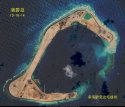schlieffen
New Member
That is not to say that I actually believe PRC could negotiate with Soviet to get Outer Mongolia back. Mongolia was de facto independent for almost three decades by the late 40s, and given the balance of power between Soviet Russia and China (communist or nationalist) the chance of Soviet compromise is non-existent. That being said, IMO if it was not for the KMT who set it in stone in 1945, the PRC could at least try to negotiate with the Soviets and strike a deal to get some concessions elsewhere. For example, it did managed to convince the soviets to withdraw its garrison from Manchua, Port Arthur (Lüshun) and Xinjiang, so maybe (just maybe) they can trade the recognition of Outer Mongolia for soviet pulling its troops out of Mongolia. It would actually be very consequential as the soviet troops in Mongolian would later be a focal point of disagreement and great source of tension between soviet and china after the sino-soviet split. This is of course just hypothetical.
Sorry for getting far off topic but IMO historical territorial change is not completely irrelevant to our discussion of SCS. As the moderator must have released it is nearly impossible to run this thread with absolutely no tolerance of political and strategic discussion. They just swing back every few days if not hours.
Sorry for getting far off topic but IMO historical territorial change is not completely irrelevant to our discussion of SCS. As the moderator must have released it is nearly impossible to run this thread with absolutely no tolerance of political and strategic discussion. They just swing back every few days if not hours.




